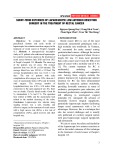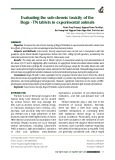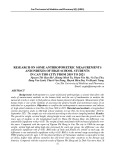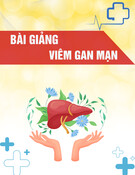
Can Tho Journal of Medicine and Pharmacy 10(7) (2024)
34
AN EVALUATION OF HYPOALBUMINEMIA
AND IRON DEFICIENCY ANEMIA IN CHILDREN
AGED FROM 2 MONTHS TO UNDER 5 YEARS OLD WITH PNEUMONIA
Tran Thi Nhu Y1 , Ly Quoc Trung2 , Nguyen Hong Ngan3, Le Thi Nhan Duyen3,
To Thi Yen Nhi3, Trinh Ngoc Khoa3, Ha Thi Thao Mai3*
1Ca Mau Obstetrics and Pediatrics Hospital
2Soc Trang Community College
3Can Tho University of Medicine and Pharmacy
*Corresponding author: httmai@ctump.edu.vn
Received:11/03/2024
Reviewed:09/04/2024
Accepted:10/05/2024
ABSTRACT
Background: Pneumonia is a potentially fatal disease that greatly compromises the health
of children. Utilizing laboratory tests is extremely beneficial in the diagnosis, monitoring, and
prognosis determination of the condition. In the realm of pediatric pneumonia, effective diagnostic
procedures include assessments for albumin levels and iron deficiency anemia. Objectives: (1)
Determine the proportions of hypoalbuminemia and iron deficiency anemia in children aged from
2 months to under 5 years old with pneumonia at Ca Mau Obstetrics and Pediatrics Hospital in
2022-2023 (2) Evaluate the association between hypoalbuminemia, iron deficiency anemia and
pneumonia in children aged from 2 months to under 5 years old at Ca Mau Obstetrics and Pediatrics
Hospital in 2022-2023. Materials and methods: a cross-sectional descriptive study on 177 pediatric
patients from 2 months to under 5 years old who were diagnosed with pneumonia and received
inpatient treatment at Ca Mau Obstetrics and Pediatrics Hospital during the research period.
Results: The percentage of patients aged 2 months to 2 years was 59.9%, which was more than the
percentage of patients aged 2 years to 5 years, which was 40.1%. The average age was 22.5±15.82
months old. The male patients constituted 56.5% of the total, whilst the female patients with
pneumonia accounted for 43.5%. Children with pneumonia made up 88.1% of the patient
population; children with severe pneumonia made up 11.9% of the patient population. The average
albumin concentration was 38.47±2.39g/L. The proportion of hypoalbuminemia was 26% and the
proportion of iron deficiency anemia was 41.8%. Children with iron deficiency anemia had a higher
rate of severe pneumonia (20.3%) than those without (5.8%). Compared to 2.9% of children without
iron deficiency anemia, 12.2% of those with the condition required more than two antibiotics to
treat pneumonia. Conclusion: When hypoalbuminemia is present, the severity of pneumonia is
significantly increased. Inadequate iron levels cause anemia, which worsens pediatric pneumonia
and necessitates supplementary antibiotic therapy.
Keywords: pneumonia, hypoalbuminemia, iron deficiency anemia, children.
I. INTRODUCTION
Pneumonia is a highly lethal illness that significantly impairs the health of children
[1]. Albumin in the blood is a crucial indicator for determining the nutritional status and
liver function of a child [2]. It had been demonstrated that decreased serum albumin and
anemia due to iron deficiency affect the prognosis of respiratory infections and
inflammatory diseases [3], [4], [5]. Nevertheless, the existing study on hypoalbuminemia in
pneumonia among children under the age of five, particularly at Ca Mau Obstetrics and
Pediatrics hospital, was restricted. We conducted a study to examine the impact of
hypoalbuminemia and iron deficiency anemia on pneumonia in children, with the aim of






![Study on toxicities of 10β-[(2'β-hydroxy-3'- imidazol) propyl] deoxo-artemisinin (32) in reproductive and developmental progresses of mice](https://cdn.tailieu.vn/images/document/thumbnail/2025/20250228/viinuzuka/135x160/8021740737116.jpg)

































